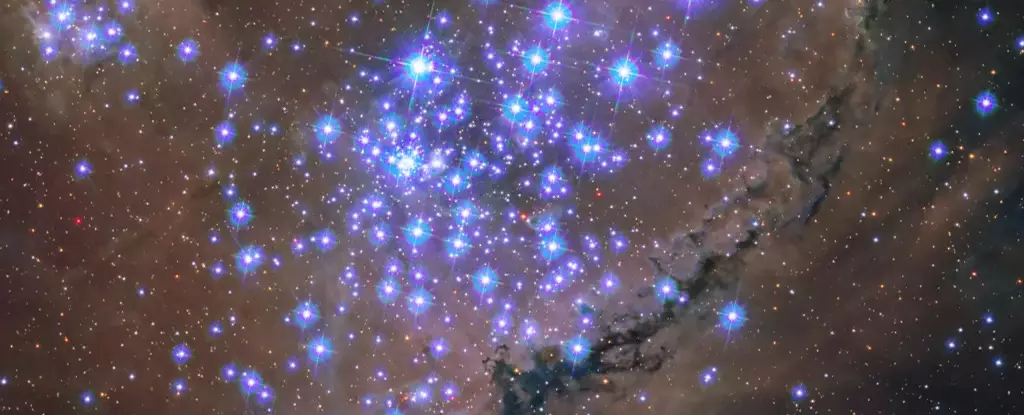Located just outside the Milky Way Galaxy, approximately 210,000 light-years away from Earth, lies the Small Magellanic Cloud (SMC). This dwarf galaxy, along with its companion, the Large Magellanic Cloud (LMC), serves as a satellite galaxy to the Milky Way. The SMC is home to around 3 billion stars and spans approximately 18,900 light-years in diameter. Scientists are intrigued by these satellite galaxies as they offer valuable insights into star formation and the evolution of galaxies through mergers, a process that the Milky Way is expected to undergo with these two galaxies in the future.
One of the most captivating features of the Small Magellanic Cloud is the star cluster NGC 346, situated near the center of the brightest star-forming area in the SMC known as the hydrogen-rich nebula N66. Recently, NASA unveiled a new image of this star cluster captured by the Hubble Space Telescope, showcasing its beauty and complexity. The sharp resolution and ultraviolet observation capabilities of the Hubble telescope enabled the creation of this breathtaking view, revealing the intricate interactions between the numerous hot, young, blue stars within NGC 346 and the surrounding dust and gas.
The Significance of the Observations
While NGC 346 has been previously studied by Hubble and more recently by the James Webb Space Telescope, the latest images combined ultraviolet and visible light data. This comprehensive view allowed scientists to explore the gas and dust structures of the nebula surrounding the star cluster. The primary objective of these observations is to gain a deeper understanding of star formation processes in low-metallicity galaxies like the SMC. These environments are believed to mirror the conditions of the early Universe, where heavy elements were scarce, and star formation played a crucial role in enriching the interstellar medium.
Despite more than three decades of service, the Hubble Space Telescope continues to deliver groundbreaking discoveries and insights into the origins and evolution of the Universe. Through its exceptional imaging capabilities, Hubble enables scientists to study distant galaxies, star clusters, and nebulae with unprecedented detail. The observations of NGC 346 in the Small Magellanic Cloud represent yet another milestone in Hubble’s enduring legacy as a vital tool for astronomical research.
The NGC 346 star cluster in the Small Magellanic Cloud stands as a remarkable testament to the beauty and complexity of the cosmos. By leveraging the powerful capabilities of the Hubble Space Telescope, scientists can unravel the mysteries of star formation and galaxy evolution, providing valuable clues about the early Universe. This latest image of NGC 346 serves as a reminder of the profound impact that space exploration and scientific inquiry can have in expanding our understanding of the cosmos.



Leave a Reply